Best Tree Service in Seabrook Island
Ask Us Anything!
Quick Quote
The Planet Green Tree Service Difference
At Planet Green Tree Service, we are firm believers that trees make the world a better place. They provide us with verdant beauty, cool shade, and emergency shelter. They raise our home values, add personality to our neighborhoods, and provide us with clean air to breathe. When your home or business has well-maintained, healthy trees, everyone benefits. That's why we are so passionate about providing our customers with dependable tree services in the Lowcountry.
We believe that honest prices, state-of-the-art equipment, friendly arborists, and good old-fashioned hard work are what set us apart from our competition. With more than 33 years of service in South Carolina, you can rest easy knowing every member of the Planet Green team is committed to the following:
- Conduct themselves in a professional manner
- Provide you with exemplary tree care services
- Arrive at your home or business on time and ready to work
- Provide you with affordable service rates
- Meet or exceed our industry standards
- Utilize the utmost safety when removing or maintaining your trees or shrubs
- Have full insurance to protect themselves and your home
Our customers mean a lot to us, which is why we strive to provide them the best, most helpful customer service in our industry. When you hire our company to perform a tree service in cityname, know that we take this responsibility seriously and will always treat your home like we would treat our own. At Planet Green Tree Service, you won't ever have to worry about sneaky hidden fees or outrageous pricing. We believe every homeowner and business owner should have access to affordable tree services, which is why we set our rates at reasonable levels. Our job is to protect your home, your trees, and also your wallet!
Service Areas
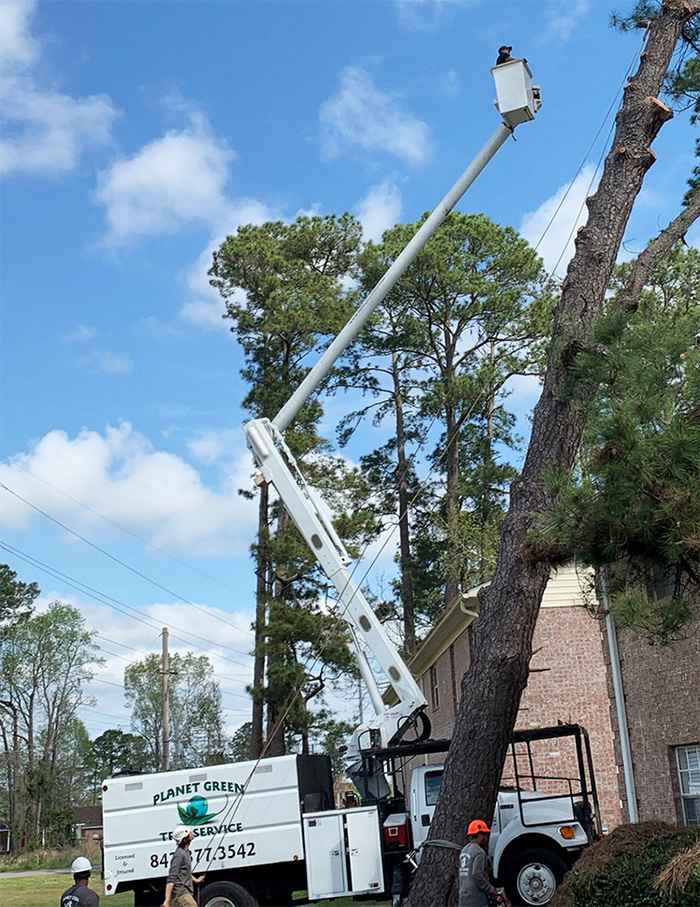
Whether your home has overgrown trees that need trimming or you have an unsightly stump that needs grinding, our team of tree experts is here to help. Curious what kind of tree care work we provide to homeowners in South Carolina?
Planet Green specializes in the following areas:
Tree Trimming in Seabrook Island
Have you noticed your favorite tree growing in a strange shape? Are your trees or shrubs so overgrown that it's making your property and home look unkempt? Are the trees near your home weighed down by dangerous dead branches? If you answered yes to any of the above questions, it might be time to speak with a Planet Green Tree Service professional to find a solution.
Like anything that lives, trees respond to their environment. When trees are not properly maintained, they can cause a whole host of problems for the homeowner. Overgrowth doesn't just look bad - it can be a potential safety hazard and liability for your home. To prevent this from happening, it's crucial that your trees are trimmed and pruned regularly. Trimming your trees and shrubs gives your home a tidy, appealing look and facilitates healthy plant and tree growth.
Because every tree and shrub is different, you must approach tree trimming with a plan. Before you start hacking at your trees with a machete, be sure to contact Planet Green Tree Service. Our team of expert arborists will come to your home and determine the best path to take for your tree trimming needs. We always take into account variables like the strengths, weaknesses, and species of your trees.
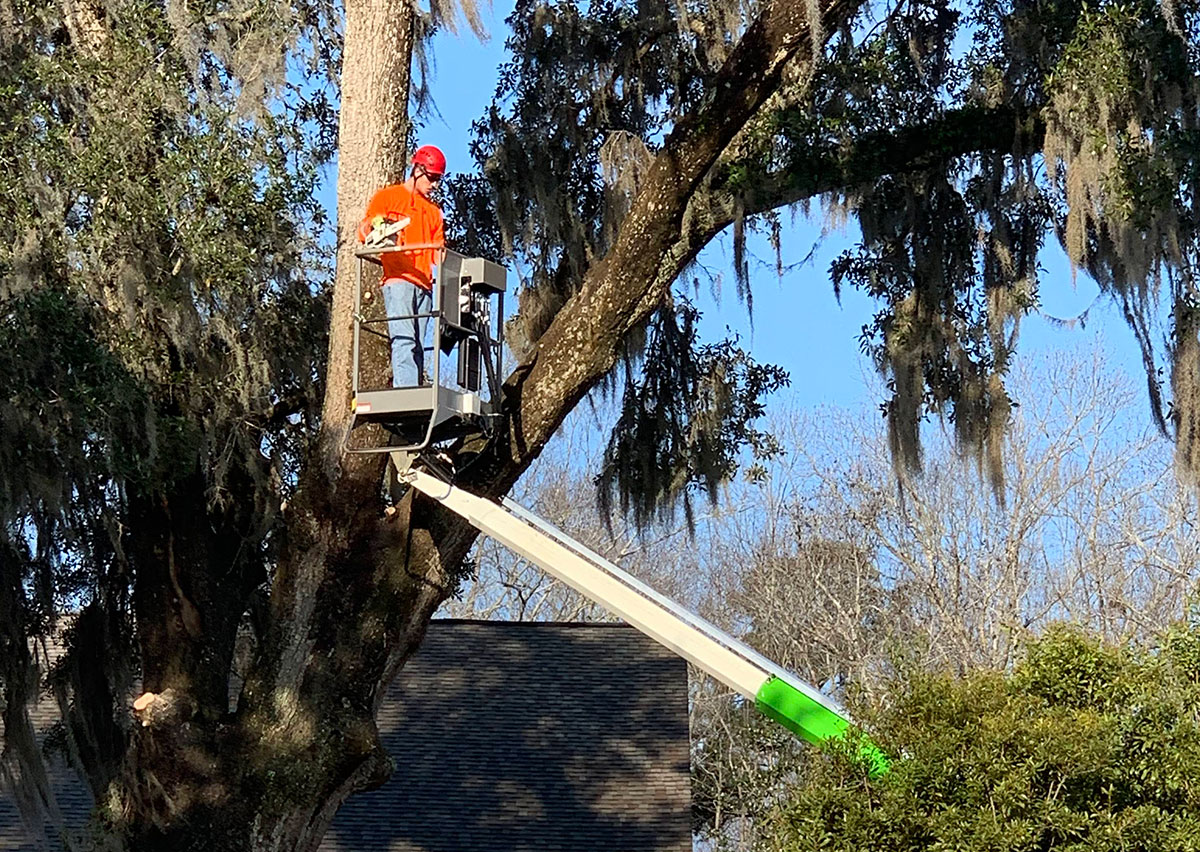
Benefits of Tree Trimming in Seabrook Island
For some folks, tree trimming seems like a minor detail in the grand scheme of homeownership. It can be a tedious job, but keeping your trees trimmed and well-maintained is more important than you might think. Below are just a few of the many benefits of keeping your trees and shrubs trimmed:
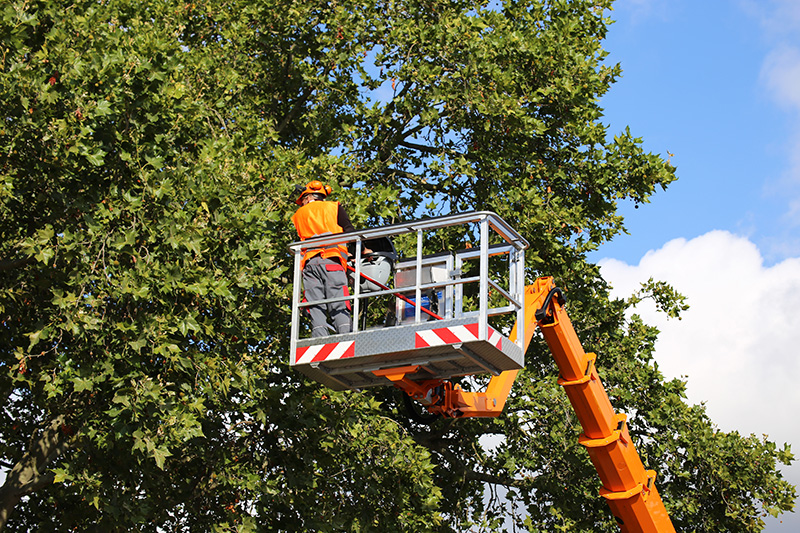
Types of Tree Trimming
Not all tree trimming services from Planet Green Tree Service are the same. Our experts specialize in a number of different tree trimming services to ensure you are getting the right kind of trim for the appropriate situation. Because even the smallest mistake can permanently affect your tree's health, we approach every tree trimming job with surgeon-like precision. That way, you know your trees are in capable, responsible hands.
Stump Removal in Seabrook Island
For most property owners, removing a tree can seem like a major project. While that notion certainly isn't wrong, tree removal is more straightforward and often easier than trying to remove an unsightly stump from your yard. Have you ever wondered why you see so many yards with stumps dotted around the land? It's because they're very difficult to remove. That is why Planet Green Tree Service has been offering stump removal services in South Carolina for more than 33 years. Our skilled stump removal experts bring a wealth of knowledge and cutting-edge tools to every stump removal project they tackle.
The fact of the matter is this: trying to remove a stump on your own is an incredible undertaking. Going the "DIY" route can take weeks to complete, even if you spend an hour or two every day. There's also the issue of operating heavy machinery (which costs time and money to rent) and even light fires to expedite the process, which is dangerous. For these reasons alone, we always recommend that you bring in a professional to remove your tree stump safely and effectively.
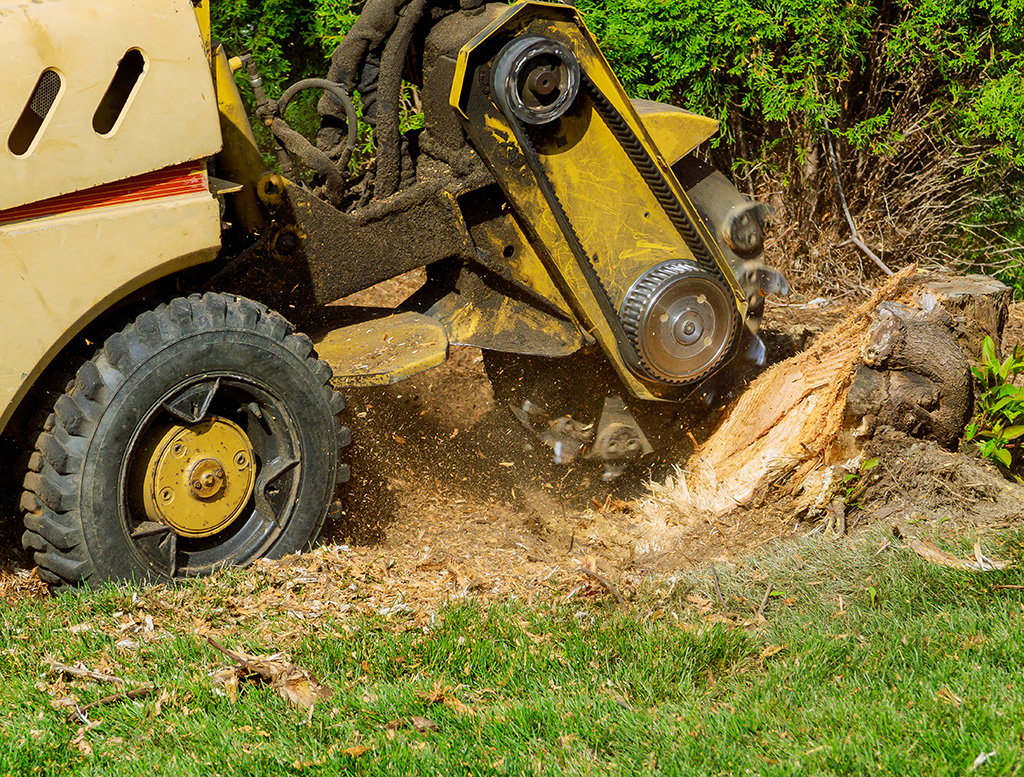
Benefits of Stump Removal in Seabrook Island
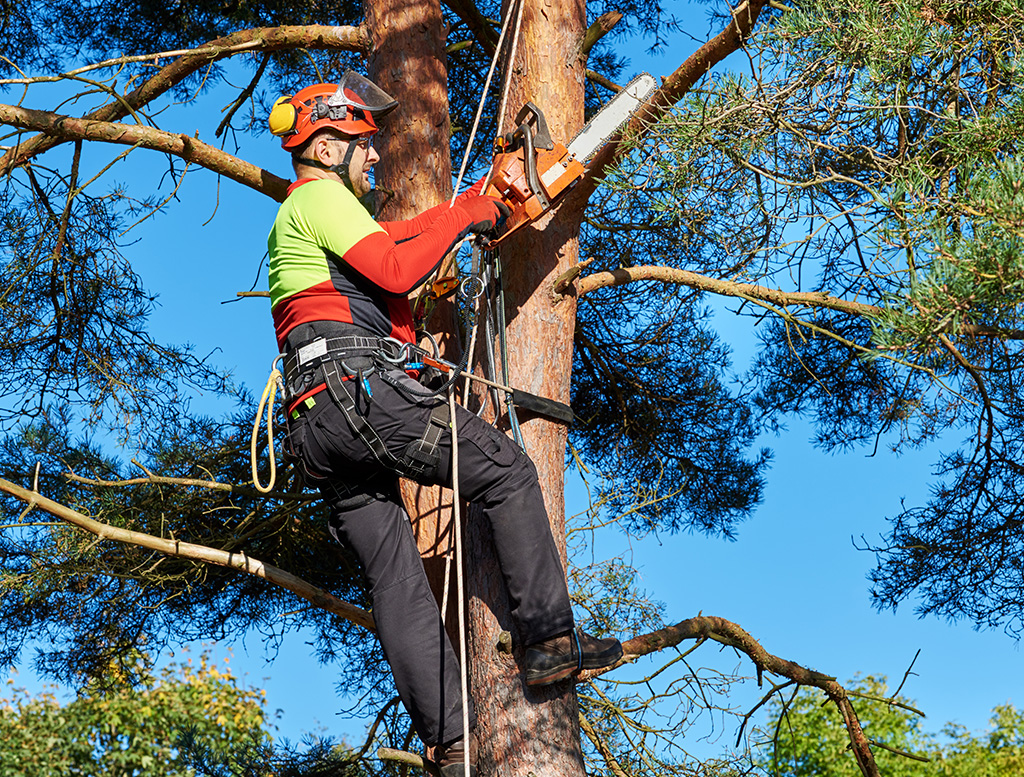
Reduce Headaches
Sure, you could take the time to do your research on how to remove a stump. You could go to Home Depot, rent a high-powered stump grinder, and risk your health trying to operate it without training. You could spend every winking moment of your free time trying to grind the stump down so you can remove it from your yard. But why go through all that trouble when a trustworthy, experienced stump removal company like Planet Green Tree Service is only a phone call away?
Our team of stump removal professionals uses state-of-the-art tools designed to keep your property damage-free during the removal process. We will turn your yard into a beautiful blank slate, so you can focus on enjoying your stump-free while we haul away all the debris.
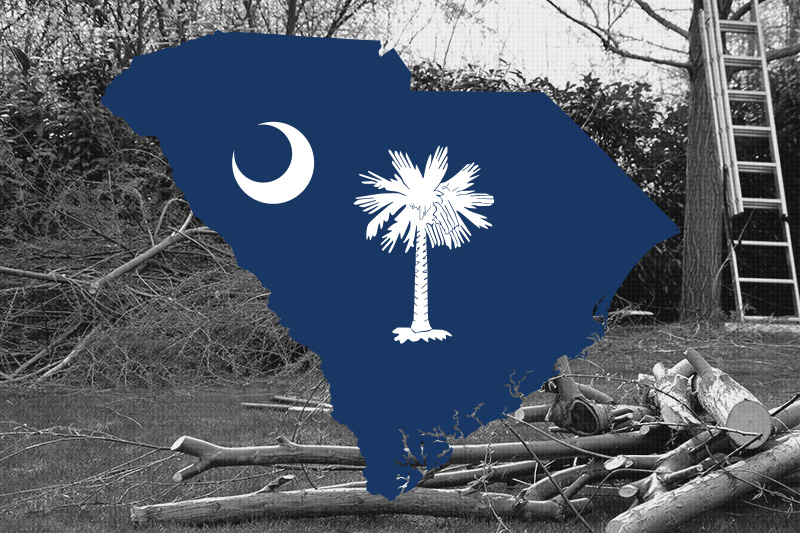
Your Premier Tree Service Company in South Carolina
With 33 years of experience, it's no wonder why so many South Carolina locals choose Planet Green Tree Service for tree trimming and stump removal in their city. Clients love us because we believe in exceeding your expectations, no matter how large or small a job is.
- Conduct themselves in a professional manner
- Provide you with exemplary tree care services
- Arrive at your home or business on time and ready to work
- Provide you with affordable service rates
Contact our office to learn more about our tree services in South Carolina or to schedule your free quote today!
Latest News in Seabrook Island, SC
First-ever committee addresses Seabrook Island short-term rentals
Anna Harrishttps://www.live5news.com/2024/02/21/first-ever-committee-addresses-seabrook-island-short-term-rentals/
SEABROOK ISLAND, S.C. (WCSC) - A first-time special committee on short-term rentals is hearing Seabrook Island residents’ concerns and hopes for the island’s future.The Seabrook Island Town Council established a Special Committee on Short-Term Rentals on Jan. 4 with the members being appointed on Jan. 23.The committee’s purpose is to study short-term rental activities and trends within the town. This could involve limiting the number of short-term rentals, limiting the ownership of multiple short-term rentals,...
SEABROOK ISLAND, S.C. (WCSC) - A first-time special committee on short-term rentals is hearing Seabrook Island residents’ concerns and hopes for the island’s future.
The Seabrook Island Town Council established a Special Committee on Short-Term Rentals on Jan. 4 with the members being appointed on Jan. 23.
The committee’s purpose is to study short-term rental activities and trends within the town. This could involve limiting the number of short-term rentals, limiting the ownership of multiple short-term rentals, what fees are reasonable, etc.
Seabrook Island is home to 2,345 family homes and villas and 588 of those are short-term rentals, according to the town.
With about 25% of the island being taken up by short-term rentals, some residents say there are issues that need to be addressed.
“Agitating alligators,” Seabrook Island resident John Lagna said during Wednesday’s first public forum. “Secondly, speeding. Thirdly, ignoring stop signs... Lastly, ignoring amenity rules.”
However, not everyone agrees.
“There are a number of factors that have entered into it, but short-term rentals seem to be an easy target,” resident Debra Hardick said.
The committee says they are referencing data from peak COVID-19 times from when the number of renters significantly increased.
Resident Paul McLaughlin says the growth of the island has impacted the overall sense of community.
“If you don’t know who your neighbors are, it’s just not a very good feeling,” McLaughlin said.
The committee is made up of a town councilman, homeowners and even short-term rental owners who have been on the island for around a decade or more. They say the town has previously had an Ad Hoc Committee to address this topic, which was allowed to be done privately, but they want this one to be public to increase transparency.
Darryl May is the only town councilman on the short-term rental committee while the other seven are residents.
“So, the goal of this committee is to develop a set of proposals for the town council to pass an ordinance,” May said.
During the public forum, some shared ideas for what that ordinance may or may not look like.
“I think we should allow renters,” resident Ann Laporte said. “I think we should allow a minimum of three nights. No more than that.”
Resident Bill Boissonalt has another idea, adding that the town shouldn’t still be referencing data from peak COVID in 2020.
“I just don’t believe that we need any new regulations regarding the overnight stay, the capped rentals, based on history,” Boissonalt said.
As far as what the committee thinks the ordinance could look like, May says he doesn’t want to jump the gun.
“I won’t hazard to guess because we’re just starting out this process and we want to have a very open mind,” May said. “But we do anticipate getting an ordinance by about June.”
There are still three more public hearings over the next two weeks and the committee encourages Seabrook Island residents and those who rent on the island to speak.
Click here to read more about past short-term rental data and sign up for public comment.
Read below for the details on the next three public forums:
Public Forum #2
Public Forum #3
Public Forum #4
Copyright 2024 WCSC. All rights reserved.
The Best Islands In South Carolina, According To Our Readers
Betsy Cribb Watsonhttps://www.southernliving.com/best-islands-south-carolina-8422905
From celebrated golf courses to unspoiled beaches, these destinations have it all.South Carolina is often referred to as the Palmetto State, so named for the abundance of the trees in the area, but it could just as easily be dubbed the Barrier Island State. With 34 barrier and tidal islands peppering its shoreline (more than any other state ...
From celebrated golf courses to unspoiled beaches, these destinations have it all.
South Carolina is often referred to as the Palmetto State, so named for the abundance of the trees in the area, but it could just as easily be dubbed the Barrier Island State. With 34 barrier and tidal islands peppering its shoreline (more than any other state except for Florida), South Carolina spills over with natural wonders, beautiful beaches, and unique destinations to explore. In our 2024 South's Best awards, readers voted on some of the very best of them. Here are the best islands in South Carolina, according to our readers.
01 of 10
Hilton Head Island
With 12 miles of public beaches, more than 24 championship golf courses, and around 250 restaurants, Hilton Head's numerical stats alone prove why it's one of the state's most beloved islands. But the real magic, of course, belongs to its community—a mix of transplants and born-and-breds who are sure to make you feel right at home, whether you're sampling local oysters at Hudson's on the Docks or watching the boats come in at Shelter Cove Marina.
02 of 10
Isle of Palms
There’s nothing sleepy about this mile-wide destination just a short drive from downtown Charleston, where the activity and restaurant offerings belie its small size. Catch a concert at beachfront venue The Windjammer, play golf or tennis at nearby resort Wild Dunes (where you can book a stay in one of the property’s two inns or numerous vacation rentals), or shake out your towel on a sliver of the island’s six miles of sandy beaches for a leisurely day in the sun.
03 of 10
Kiawah Island
While much of this tree-shaded barrier island is accessible only to those staying at Kiawah Island Golf Resort (either at The Sanctuary hotel or in one of their many rental properties), Beachwalker Park on the island’s west end is home to one of the state’s most beautiful beaches. Here, you’ll find both ocean-fronting shoreline and river views and can rent chairs and umbrellas for a no-fuss beach day. On your way, pick up deli sandwiches from The Station, an old-school convenience store in Freshfields Village, for an easy picnic.
04 of 10
Edisto Island
This sea island about an hour’s drive from Charleston feels like a throwback in all the best ways. You won’t find high-rise hotels here, and the wildest nights are Tuesdays and Thursdays from the end of May through the beginning of August when the Edisto Island Lions Club hosts bingo (no booze allowed). For seasonally driven fare made with locally sourced ingredients, settle in for a meal at Ella and Ollie's (pictured above). The area’s crowning jewel is Botany Bay, a 4,600-acre nature preserve with nearly three miles of unspoiled shoreline, where erosion has left dead trees in its wake, resulting in a beautiful, otherworldly span referred to as the “boneyard beach.”
05 of 10
Sullivan’s Island
Just two-and-a-half miles long, Sullivan’s is a secret that Charleston locals are keen to keep. First settled in the late 17th century, the island can claim an embarrassment of riches when it comes to both historical significance and natural beauty. The wide beaches are pristine, and there’s nary a trace of touristy kitsch on Middle Street, the town’s main drag—just a handful of memorable eateries (we’re partial to The Obstinate Daughter’s house-made pastas) and well-curated shops (visit Sandpiper Gallery to peruse the work of local artists). The bitty beach town is big on curb appeal too: thoughtfully maintained historic homes and storybook cottages with flower-swamped trellises line the streets that crawl toward the beach.
06 of 10
Folly Island
About a dozen miles from downtown Charleston, this 12-square-mile barrier island is best known for being home to Folly Beach, a laid-back surf town that departs from the Holy City’s tucked-in approach in favor of flip-flop casual. With the Folly River on one side and the Atlantic Ocean on the other, there’s no shortage of opportunities for waterfront fun: Paddle through tidal creeks with a local outfitter, stretch out on the sand (there are six miles of beachfront here), or cast a line from the historic Folly Beach Pier, which recently reopened after extensive renovations.
07 of 10
Hunting Island
Just a 25-minute drive from downtown Beaufort, explore the seaside charmer's wilder side at Hunting Island State Park (South Carolina's most popular state park). Here, five miles of unspoiled beaches unfurl along the Atlantic and sandy trails wind through dense maritime forest.
08 of 10
Daufuskie Island
As the crow flies, the southernmost of South Carolina’s barrier islands is just miles from Savannah and Hilton Head, but it might as well be worlds away. Daufuskie is accessible only by boat (the official ferry offers four shuttles from Bluffton a day, five on Fridays), which is likely one of the reasons its 500 or so residents have been able to so carefully preserve its natural environment and its rich Gullah history. And while the island remains untouched in many ways, that doesn’t mean there’s nothing to see or do here: Tour the island with sixth-generation Daufuskie native Sallie Ann Robinson for an education in Gullah culture; go for a horseback ride on the beach; shop indigo-dyed goods at Daufuskie Blues; and cap off the day with a plate of deviled crab at Old Daufuskie Crab Company.
09 of 10
Fripp Island
About 20 miles from Beaufort, Fripp Island is a 3,000-acre designated wildlife sanctuary, home to more than 175 species of birds, plus endangered loggerhead turtles who use its beach as a nesting ground. The private island is accessible only to homeowners and those staying in vacation rentals, but once you're here, there's plenty to do, from guided kayak eco-tours to pickleball and golf.
10 of 10
Seabrook Island
Right next door to Kiawah Island, Seabrook has stunning saltmarsh vistas and celebrated golf courses, along with a full-service equestrian center that offers guided horseback rides. Its nearly four miles of beaches are private, accessible only to residents and those renting, though Bohicket Marina (just before the property’s gates) welcomes anyone and everyone to enjoy its river views. Snag a table on the upper deck of Salty Dog Cafe to tuck into fresh seafood with one of the area’s most memorable sunsets.
Editorial: We dodged a bullet on Seabrook. Make sure it doesn't happen again.
THE EDITORIAL STAFFhttps://www.postandcourier.com/opinion/editorials/editorial-we-dodged-a-bullet-on-seabrook-make-sure-it-doesnt-happen-again/article_1c525744-4282-11ee-98c5-a71ff022b55a.html
Everyone who cares about southern Johns Island should be pleased that a controversial annexation was pulled from the Seabrook Island Town Council's agenda last week in the face of mounting opposition over what the annexation would help create — a new boat dock, private clubhouse, boathouse, pool house and 10 rental cottages — and the likelihood that it would add more traffic and pollution to the rural side of Charleston County's urban growth boundary.But those same folks, particularly leaders on Kiawah and Seabrook islands...
Everyone who cares about southern Johns Island should be pleased that a controversial annexation was pulled from the Seabrook Island Town Council's agenda last week in the face of mounting opposition over what the annexation would help create — a new boat dock, private clubhouse, boathouse, pool house and 10 rental cottages — and the likelihood that it would add more traffic and pollution to the rural side of Charleston County's urban growth boundary.
But those same folks, particularly leaders on Kiawah and Seabrook islands and Charleston County Council, should not get complacent. Instead, they need to work together on better planning to guide development in and around where those two sea islands meet up with southern Johns Island.
It's unclear when, or if, the developer's annexation request might resurface. Even if it doesn't, there undoubtedly will be other development plans that will expose the tensions between those living on rural Johns Island and those living beyond the gates at Kiawah and Seabrook. This moment offers an important reset, one that should begin with getting all these local governments to recommit to the vision of an urban growth boundary — a line past which suburban development would not be supported through zoning, infrastructure or other local policies.
Such a recommitment wouldn't bind future councils any more than their respective comprehensive plans do, but it would send a unified message about their mutual commitment to respect the natural beauty and environmental sensitivity of the area.
It's clear that development pressures at Kiawah's and Seabrook's doorstep are increasing. A fresh series of new developments, including a senior living facility and an emergency medical facility, is cropping up. Elected officials, neighborhood leaders and county planners need to come up with a mutually agreed-upon zoning overlay for the area, one that would guide future development to ensure new uses and the size and scale of new buildings are appropriate. Such an overlay also would prevent developers from trying to play one jurisdiction against another to get the permits they seek, a tactic sometimes used in other parts of the tri-county area.
The mutual interests of everyone became clear during this recent annexation controversy, as the mayor of Kiawah Island took the unusual step of sending a letter to Seabrook's mayor and council urging them to reject the annexation and respect the urban growth boundary, which Mayor John Labriola noted "serves as a guide to direct appropriate urban and suburban development while preserving and cherishing the rural charm of the Sea Islands that we all hold dear."
Given what we've seen this summer, the existing urban growth boundary line may not continue to be enough on its own, and we believe a joint planning effort could help pin down the following: to what extent commercial development in the greater Freshfields area should be allowed to inch its way north on Betsy Kerrison; whether the towns should annex any more of Johns Island; whether any upzoning in the area might be appropriate; and how new building would affect the net traffic and drainage needs around Kiawah and Seabrook. While residents live only on Kiawah or Seabrook or in the unincorporated area, they have a stake in the answers to all those questions. This area deserves a new zoning overlay and conservation goals that offer a shared vision of how the southern part of Johns Island will — and will not — change.
Regional planning needs to take place on a large scale — such as our greater metro area from Seabrook to Awendaw to Summerville and Moncks Corner — but it's also necessary on a smaller scale, especially in those places such as southern Johns Island where multiple local governmental jurisdictions meet.
Decades ago, the city of Charleston and Charleston County came up with the urban growth boundary across Johns Island and other areas where the suburbs ended to ensure their zoning and other policies worked together to protect rural areas that residents wanted to remain rural. Kiawah and Seabrook were once seen as too distant to bring into the conversation about that line. That's not the case any more.
Click here for more opinion content from The Post and Courier.
Get a weekly recap of South Carolina opinion and analysis from The Post and Courier in your inbox on Monday evenings.
Editorial: Seabrook Island, other beach towns, should respect Johns Island growth boundary
THE EDITORIAL STAFFhttps://www.postandcourier.com/opinion/editorials/editorial-seabrook-island-other-beach-towns-should-respect-johns-island-growth-boundary/article_3f452f3c-2578-11ee-9aa0-1fa7a0456ce2.html
There are several powerful reasons why Seabrook Island Town Council should reject a proposed annexation that would pave the way for a new boat dock, private clubhouse, boathouse, pool house and 10 rental cottages near the town's northern limits.The additional boat and car traffic would create more congestion on Betsy Kerrison Parkway in particular and Johns Island in general, as well as more pollution to the otherwise pristine Bohicket Creek. But the biggest reason Town Council should reject the 18-acre annexation is the dangerous pre...
There are several powerful reasons why Seabrook Island Town Council should reject a proposed annexation that would pave the way for a new boat dock, private clubhouse, boathouse, pool house and 10 rental cottages near the town's northern limits.
The additional boat and car traffic would create more congestion on Betsy Kerrison Parkway in particular and Johns Island in general, as well as more pollution to the otherwise pristine Bohicket Creek. But the biggest reason Town Council should reject the 18-acre annexation is the dangerous precedent it would set, a precedent that would erode the rural character of southern Johns Island.
Decades ago, local governments, led by the city of Charleston and Charleston County, agreed on an urban growth boundary across Johns Island and other areas. The big idea was to ensure their zoning and other policies were synchronized to allow suburban development to continue to spread, but only up to a point, beyond which the existing rural nature would be preserved. The boundary has generally worked well, but as with so much other conservation work, it needs to be embraced and reaffirmed by each new generation.
Seabrook Island's potential move would mark one of the first and most dramatic annexations by a municipality into the rural portion of the island; if it succeeds, it almost assuredly wouldn't be the last, and it could hasten the unraveling of the boundary line — and increase development pressures on the shrinking amount of land on the rural side of the boundary.
Robby Maynor of the Coastal Conservation League agrees that annexing and rezoning this property on the rural side of the urban growth boundary would set a disastrous precedent on the county's Sea Islands and could lead to annexation battles such as those that are playing out along the most rural stretches of the upper Ashley River, whose rural historic district remains in jeopardy from encroaching homes, stores and the traffic they bring. Approving the marina project would be "like kicking an anthill and hoping you don't get bit," he says.
The case that the property's owner and other supporters have made for the annexation is that it would give Seabrook Island future control of the site and limit future development there, according to reporter Warren Wise. But the proposal appears to us as designed to facilitate development, not to curb it. Annexing the site, which is next to Bohicket Marina, would allow it to tie into the town's sewer system.
Unfortunately, Seabrook Island's Planning Commission has recommended annexing the site and rezoning it for a mixed-used development. We urge Town Council members to reject that move when they consider the matter Aug. 22.
As Mr. Wise noted, the project is a scaled-down version of a 30-year-old Andell Harbor project that state environmental regulators rightly and mercifully rejected. While this is smaller, with only about 4 acres of development near the creek and the rest set aside for open space, it still would represent an unwelcome and disturbing encroachment into the rural area between the barrier islands of Kiawah and Seabrook and the suburban growth from the city of Charleston.
Last year, we urged elected officials, neighborhood leaders and planners with Charleston County and the two beach towns to come up with a mutually agreed-upon overlay for their shared area at the southern tip of Johns Island. That overlay should guide future development toward the kinds of uses — and the sizes and scale — residents of all three jurisdictions would most like to see, and help address growing real estate pressures in a way residents prefer. We repeat the call for regional cooperation, and Seabrook Island's rejection of this annexation would be an important first step.
Code enforcement reports show violations of short-term rentals on Seabrook Island
Anna Harrishttps://www.live5news.com/2024/03/20/code-enforcement-reports-show-violations-short-term-rentals-seabrook-island/
SEABROOK ISLAND, S.C. (WCSC) - The debate on short-term rentals continues on Seabrook Island as the special committee met with code enforcement and the property owner’s association to see how much of a burden short-term rentals are causing them.The purpose of the committee is to study short-term rental activities and trends within the town. This could involve limiting the number of...
SEABROOK ISLAND, S.C. (WCSC) - The debate on short-term rentals continues on Seabrook Island as the special committee met with code enforcement and the property owner’s association to see how much of a burden short-term rentals are causing them.
The purpose of the committee is to study short-term rental activities and trends within the town. This could involve limiting the number of short-term rentals, limiting the ownership of multiple short-term rentals, what fees are reasonable, etc.
Seabrook Island is home to 2,345 family homes and villas and 588 of those are short-term rentals, according to the town.
Town councilman Darryl May, who’s also the chair of the committee, said they have heard over 450 comments both written and at the public forums.
He said they show how divided the island really is over whether or not to cap the number or push any more enforcement.
“There probably should be better enforcement of our rules, nuisance-type rules, on the island,” May said. “More understandable enforcement. Things of that nature.”
Town of Seabrook Island Mayor Bruce Kleinman said one of the main takeaways for him was that people are assuming what they want is the opposite of what they think the committee will do. However, he said there’s just no way of knowing that without an outcome and people need to be patient with the process.
“The process is working,” Kleinman said. “I think people in the town need to be a little patient.”
Members of the town’s code enforcement team presented their findings over the last nine months of alleged and identified violations during Wednesday’s meeting.
They found that only 7% of the identified coming from STRs. However, town administrator Joseph Cronin says some of the nuisance violations could overlap.
“There’s probably more violations that are out there,” Cronin said. “But if it’s not reported to us, it’s not observed by us, it’s obviously not going to be reflected in our data.”
Short-term rentals have 27 out of the 378 total found violations. Out of those, just over half came from vehicles parked in a yard or landscape area. The next most were overnight occupancy exceeding the permitted amount. Three violations were found for advertising a non-permitted short-term rental unit.
The team said if they discover a short-term rental has three violations, which they either admitted to or were found guilty in court, they can be suspended. Only then can the town revoke its short-term rental license.
“We felt like that was a little too lenient,” Cronin said. “...A couple incidences where we thought it may be more appropriate to be able to take more dramatic action earlier.”
He said there’s another idea.
“Three violations could be immediate revocation,” Cronin said.
May say he’s heard the argument that STRs lead to people wanting to move full-time to the island. But both he and Kleinman also understand that nuisances, like trash and noise, can be a big deterrent.
The committee has several more meetings before they take their recommendations to the town council which gives the final approval. The goal is to wrap this up by the end of June.
“Even if it isn’t what each Seabrooker hoped for, it will at least be a result that they perceive was reached in a fair way,” Kleinman said.
For the full list of code enforcement violations over the past nine months, read below.
STR Committee Information - 03-20-2023 by Live 5 News on Scribd
Copyright 2024 WCSC. All rights reserved.
Disclaimer:


